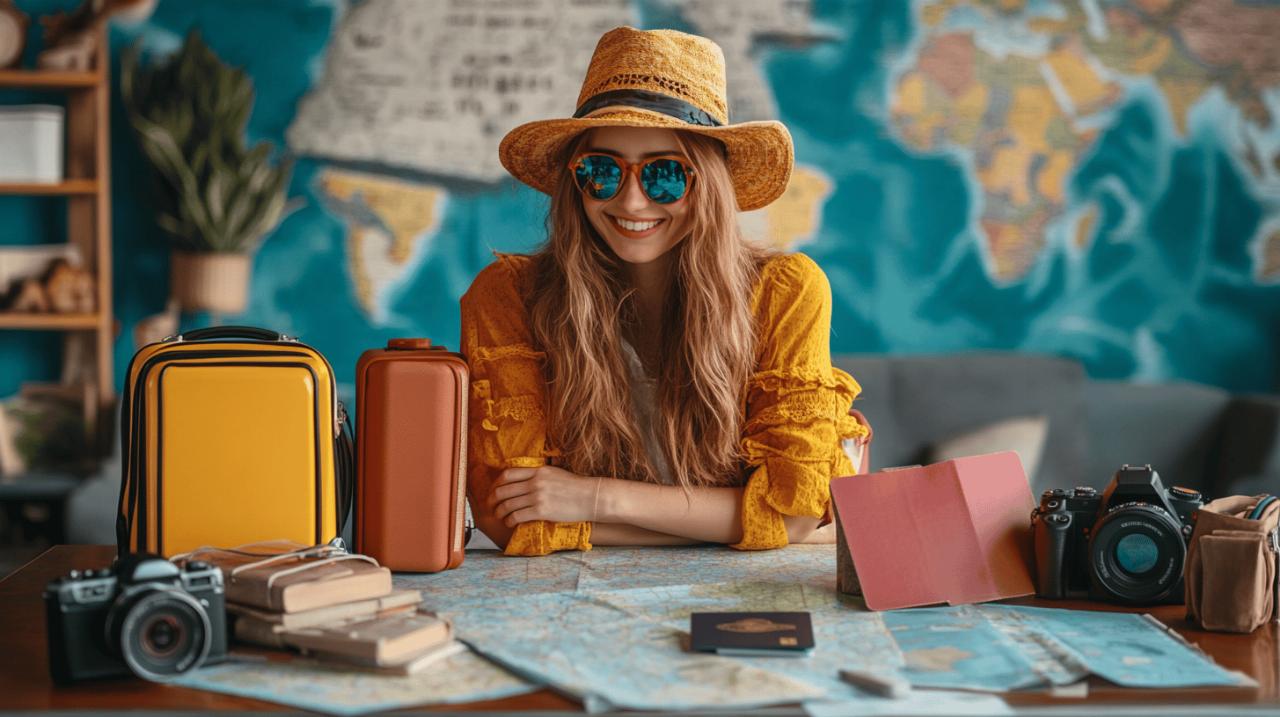
Crafting a solid plan for your upcoming adventure minimizes stress and sets the stage for enjoyable travel experiences. From selecting destinations to gathering essential documents, every detail plays a vital role in your journey's success. A well-structured approach to trip planning can transform a potentially overwhelming process into an exciting prelude to your adventure.
Creating a stress-free travel plan
The way you organize your trip directly impacts your travel experience. Smart planning eliminates common travel headaches while maximizing your enjoyment. Taking time to develop a comprehensive strategy before departure ensures you're ready for whatever your journey might bring.
Establishing a pre-trip timeline
Beginning your preparations well in advance gives you ample time to handle all necessary arrangements. Start by checking your passport's validity, ensuring it won't expire within six months of your return date. Research your destination thoroughly, examining local customs, weather patterns, and must-see attractions. Creating a detailed budget and securing travel insurance should follow next in your PreparaTuViaje process. Six to eight weeks before departure marks the ideal time for addressing health requirements like vaccinations. As your departure approaches, focus on booking transportation, accommodations, and planning key activities.
Utilizing travel planning tools
Modern travelers benefit from numerous digital resources that streamline trip organization. Flight comparison sites like Skyscanner help locate affordable airfare, while platforms such as Booking.com and Hostelworld simplify accommodation searches. Destination-specific apps provide valuable insights about local attractions and transportation options. Many travelers find that digital PreparaTuViaje tools help manage everything from itinerary creation to currency conversion. Don't overlook practical tools like packing lists and emergency contact templates. Digital document storage ensures you have backup copies of important papers accessible from anywhere, while offline maps and translation apps prepare you for potential connectivity issues at your destination.
Understanding your destination
Travel preparation starts with thorough destination research. When planning your next trip, taking time to understand your destination creates a foundation for a smoother, more enjoyable experience. Effective preparation reduces stress and helps you make the most of your adventure. This process involves researching local culture, securing necessary documents, creating a detailed itinerary, packing efficiently based on climate and activities, arranging accommodations, and taking health precautions.
Researching local customs and etiquette
Learning about local customs and etiquette is crucial for respectful travel. Begin by reading guides about your destination at least several weeks before departure. Pay attention to dress codes, greeting customs, tipping practices, and dining etiquette. This knowledge helps you avoid unintentional offense and fosters positive interactions with locals. Many travelers find reading culture-specific guides valuable for understanding nuances of social behavior. Make notes of major cultural differences, particularly regarding photography permissions, temple or religious site protocols, and public behavior expectations. Before your trip, spend time studying these customs as part of your pre-trip organization checklist. This research not only shows respect but often leads to more meaningful travel experiences and helps you integrate better with the local community during your stay.
Learning Basic Phrases in the Local Language
Mastering a few key phrases in your destination's language can transform your travel experience. Focus on practical expressions like greetings, thank you, please, and basic questions about directions or prices. Even minimal language efforts are typically appreciated by locals and can break down initial communication barriers. Create digital flashcards or use language apps to practice pronunciation before your trip. Many seasoned travelers recommend learning at least five to ten essential phrases for each destination. Beyond verbal communication, studying nonverbal cues specific to the culture proves equally valuable, as gestures can vary significantly between countries. This language preparation is particularly valuable in regions where English is less commonly spoken. When combined with your research on local customs, these communication skills form a strong foundation for meaningful cultural exchange during your travels, leading to richer experiences and often opening doors to authentic local interactions.
Developing a comprehensive itinerary
Creating a well-structured itinerary forms the backbone of successful trip preparation. A thoughtful plan helps you make the most of your travel time while reducing stress and potential problems along the way. Start by researching your destination thoroughly—understanding local customs, peak tourist seasons, and must-see attractions gives you a solid foundation for building your schedule. Consider the length of your stay and prioritize activities based on your personal interests and travel goals. Your itinerary should include basic details like flight times, accommodation addresses, and reservation confirmations, all accessible in one place for quick reference during your journey.
Balancing scheduled activities and free time
The art of crafting an effective itinerary lies in finding harmony between planned activities and spontaneous exploration. While scheduling major attractions and time-sensitive reservations is necessary, avoid the common mistake of over-scheduling every moment of your trip. Build in buffer time between activities to account for unexpected delays, transportation issues, or simply the desire to linger longer at a place you love. Many travelers find success with the morning-activity approach—planning specific outings for the first half of the day while leaving afternoons open for relaxation or unexpected discoveries. This balance protects your trip from becoming an exhausting checklist rather than an enjoyable experience, allowing you to adapt to weather changes, personal energy levels, or local recommendations you receive along the way.
Mapping out transportation between destinations
Transportation planning serves as the connective tissue of your travel itinerary. Research your options well in advance—whether you'll rely on public transit, rental vehicles, tour services, or a combination of methods. Calculate realistic travel times between locations, factoring in potential delays, traffic patterns, and the frequency of available services. If visiting multiple cities, determine whether flights, trains, or buses offer the best balance of cost and convenience. For local transportation, apps like Google Maps can help you visualize routes and estimate travel durations. When exploring urban areas, locate your accommodations on a map relative to major attractions to gauge walking distances. Print or download offline maps and transportation schedules to access them without internet connectivity. Smart transportation planning creates a seamless flow to your journey while minimizing wasted time and travel-related stress.
Mastering the Art of Packing
Packing might seem straightforward, but it's truly an art that can make or break your travel experience. When you prepare thoughtfully for your next adventure, you'll enjoy peace of mind knowing you have everything you need without the burden of excess baggage. Smart packing starts with research about your destination and creating a personalized checklist tailored to your specific journey.
Pre-trip organization is essential for stress-free travel. Many experienced travelers recommend laying out all items before placing them in your luggage, which helps identify unnecessary duplicates and ensures you don't forget critical items. Consider using packing cubes or compression bags to maximize space and keep your belongings organized throughout your journey.
Selecting weather-appropriate clothing
Researching your destination's climate is crucial for efficient packing. Check weather forecasts for your travel dates and pack versatile clothing that can be layered depending on temperature fluctuations. Multipurpose gear, such as pants that zip off into shorts, can significantly reduce the amount of clothing needed while providing options for various weather conditions.
When selecting clothes, prioritize fabrics that are lightweight, wrinkle-resistant, and quick-drying. Limit yourself to a cohesive color palette so items can be mixed and matched, creating multiple outfits from fewer pieces. Remember to plan your airport outfit strategically—wear your bulkiest items during transit to save luggage space and ensure comfort during your journey.
Organizing essentials and minimizing extras
Start with absolute essentials: travel documents, medications, electronic devices, and chargers. Create a small first aid kit containing basics like pain relievers, stomach medicine, band-aids, and any prescription medications. Always carry a reusable water bottle with a filter to stay hydrated while reducing plastic waste and saving money.
Keep emergency cash (around $200 USD recommended) in a secure location separate from your primary wallet. Make digital and physical copies of your passport and important documents. Pack a small flashlight or headlamp, backup credit cards, and a list of emergency contacts. These preparations might seem excessive, but they provide valuable peace of mind and practical solutions when unexpected situations arise during your travels.
Managing travel documentation
Travel documentation forms a critical part of trip preparation. Proper management of visas, permits, and essential documents can save time, reduce stress, and ensure a smooth journey. Many travelers overlook this aspect until the last minute, creating unnecessary complications. Planning ahead for your documentation needs is just as important as choosing accommodations or planning activities.
Securing necessary visas and permits
Begin by verifying that your passport has at least six months of validity beyond your planned return date. This is a standard requirement for many countries. Research visa requirements for your destination well in advance—ideally 6-8 weeks before departure. Different nations have varying application processes, fees, and processing times. Some countries offer visa-on-arrival or visa-free entry for certain passport holders, while others demand extensive documentation, interviews, or proof of onward travel. Create a checklist of required permits beyond standard tourist visas, such as special permissions for protected areas, work permits if applicable, or specific documentation for adventure activities. Setting calendar reminders for application deadlines helps maintain your pre-trip organization timeline.
Keeping digital copies of important documents
Making copies of your passport and important documents is an essential step in your travel preparation. Create digital scans of your passport identification page, visa pages, driver's license, travel insurance policy, flight itineraries, and hotel reservations. Store these copies in multiple secure locations: your email account, a password-protected cloud storage service, and shared with a trusted family member or friend. Consider using travel apps specifically designed for secure document storage. Physical photocopies remain valuable backups—keep these separate from the originals in your luggage. This practice becomes invaluable if your original documents are lost or stolen during your trip. Many experienced travelers also keep a list of emergency contacts, known allergies, and any medical conditions in both digital and physical formats. This comprehensive approach to document management serves as a crucial component of emergency preparedness during international travel.
Prioritizing health and safety
Planning a trip involves many steps, from choosing your destination to packing the right items. Among these preparations, safeguarding your health and safety deserves special attention. Taking preventive measures before departure can save you from potential troubles during your adventure and give you peace of mind throughout your journey.
Getting required vaccinations and medications
Medical preparation should begin 6-8 weeks before your departure date. Research which vaccinations are mandatory or recommended for your destination. Many countries require proof of specific immunizations upon entry, especially for travelers coming from regions with endemic diseases. Visit your healthcare provider to discuss your travel plans and get appropriate vaccinations.
Pack a small first aid kit containing essential medications. This should include pain relievers like Tylenol, medicine for stomach illnesses, eyedrops, Band-Aids, scissors, hydrocortisone cream, and antibacterial ointment. Your doctor might also approve a small supply of antibiotics for emergencies. If you take prescription medications regularly, bring enough to last your entire trip plus a few extra days in case of unexpected delays.
Remember to carry a list of your allergies and medical conditions. This information can be crucial if you need medical attention in a place where you don't speak the local language.
Selecting appropriate travel insurance coverage
Travel insurance is not an optional extra but a necessity. The right policy can protect you from financial losses due to trip cancellations, medical emergencies, evacuations, lost luggage, or theft. When selecting travel insurance, consider your destination, planned activities, and personal health situation.
Several reliable providers offer various coverage options. SafetyWing, World Nomads, InsureMyTrip, and Medjet are worth exploring. Read the policy details carefully before purchasing to ensure it covers all your needs. Pay particular attention to coverage limits for medical expenses and emergency evacuations.
Keep digital and physical copies of your insurance policy details, including the emergency assistance phone number. Store these documents separately from your main luggage to ensure you can access them even if your belongings are lost or stolen.
Taking these health and safety precautions might seem time-consuming during your trip preparation, but they form a crucial safety net that allows you to explore with confidence and handle unexpected situations effectively.



